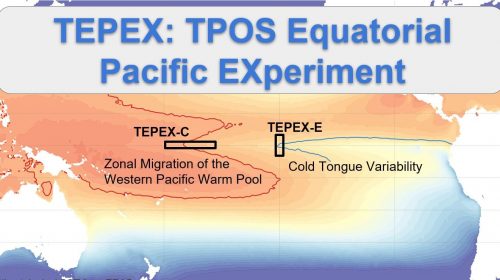CPO’s Climate Variability & Predictability (CVP) program provided support in 2015 for Climate Process Teams (CPTs) with the goal of increasing Madden-Julian Oscillation (MJO) prediction skill in NOAA’s global forecasting models. CPTs are interdisciplinary groups of observationalists, theoreticians, process modelers, and model developers that work together to transfer improvements in understanding and modeling directly to the model developers. Researchers funded under this CVP-CPT project have recently released work detailing improvements in how NOAA’s Climate Forecast System handles upper ocean mixing parameterization and air-sea fluxes. Specific improvements include the increase of the vertical resolution in the upper ocean and the implementation of the General Ocean Turbulence Model (GOTM) in CFS. Their work, released as early online access at the Journal of Advances in Modeling Earth Systems (JAMES), demonstrates these improvements through a comparison of model simulations with high-quality, in-situ data collected during the DYNAMO field campaign (also supported by CVP). All together, these changes could help increase the NOAA CFS’s prediction skill for the largest element of intraseasonal variability in the tropical atmosphere.
Climate Process Team Delivers Ocean Component of NOAA Climate Forecast System Improvements









